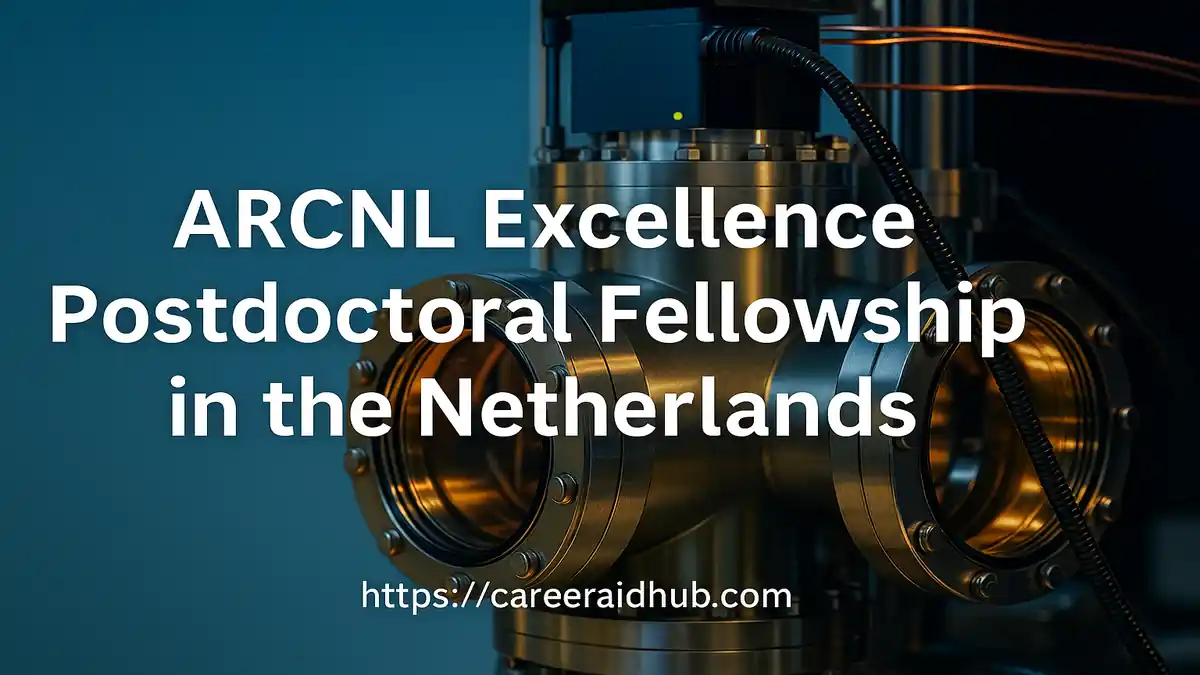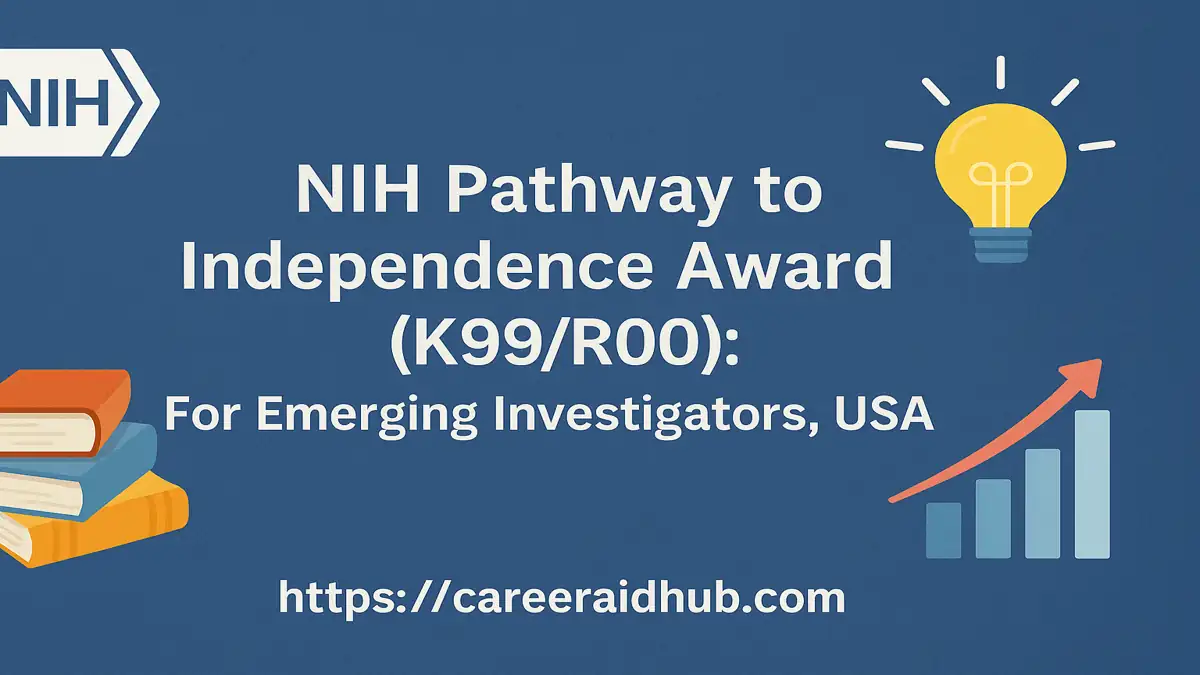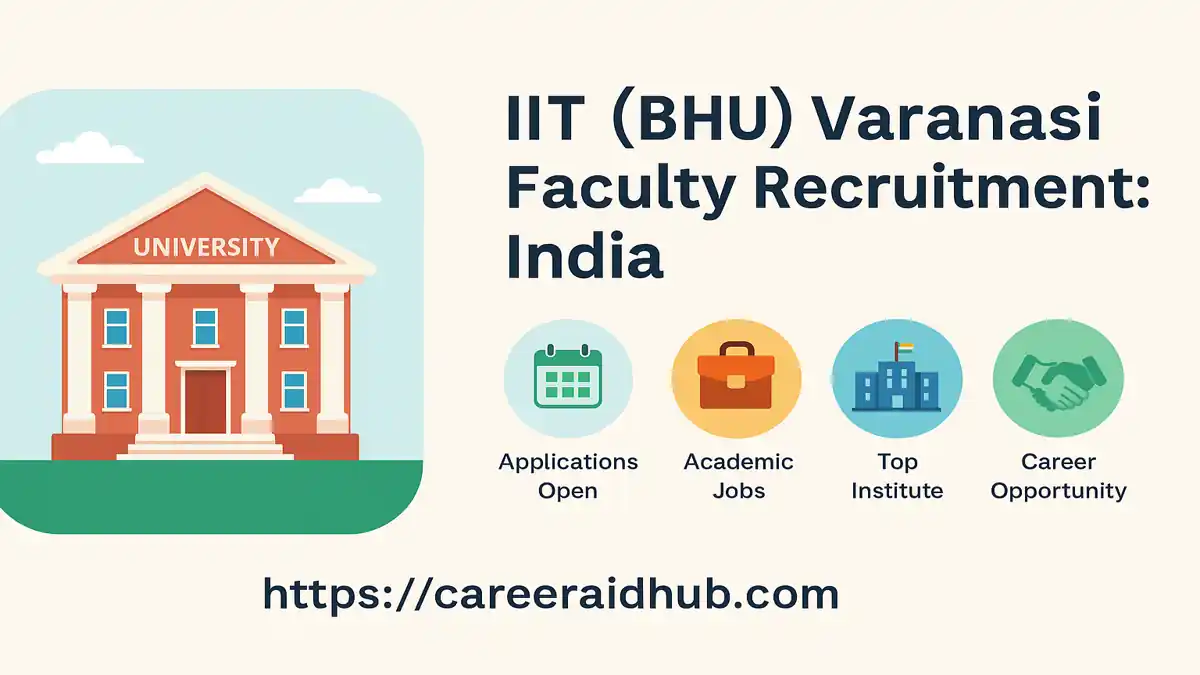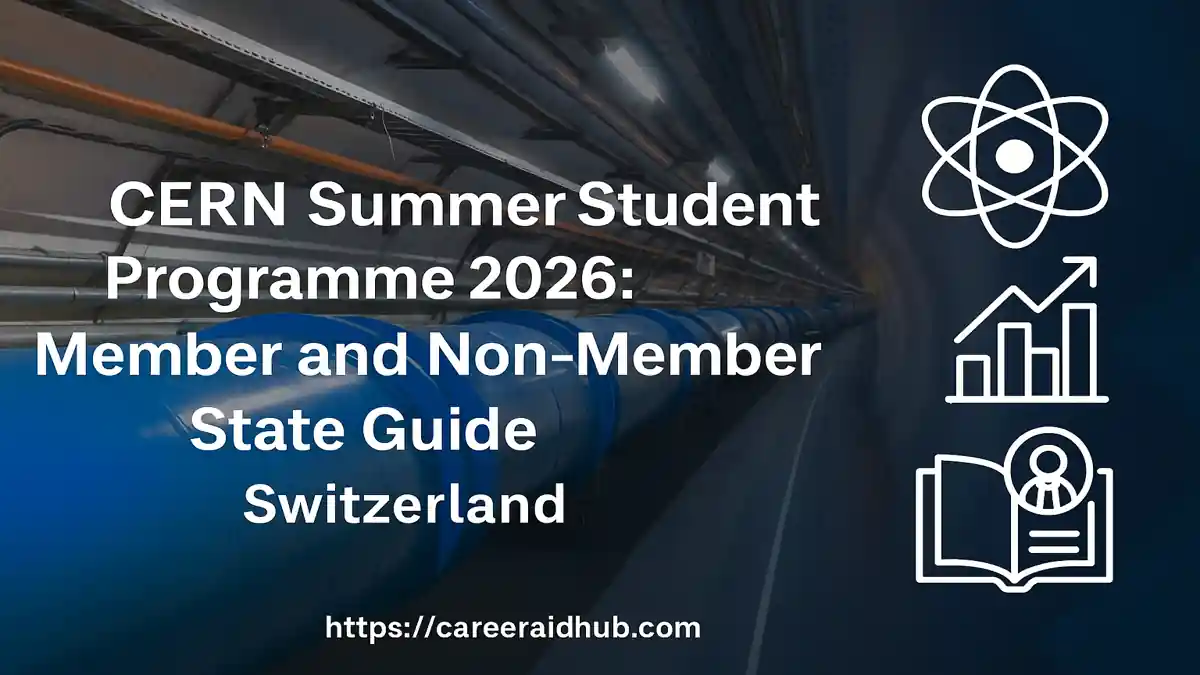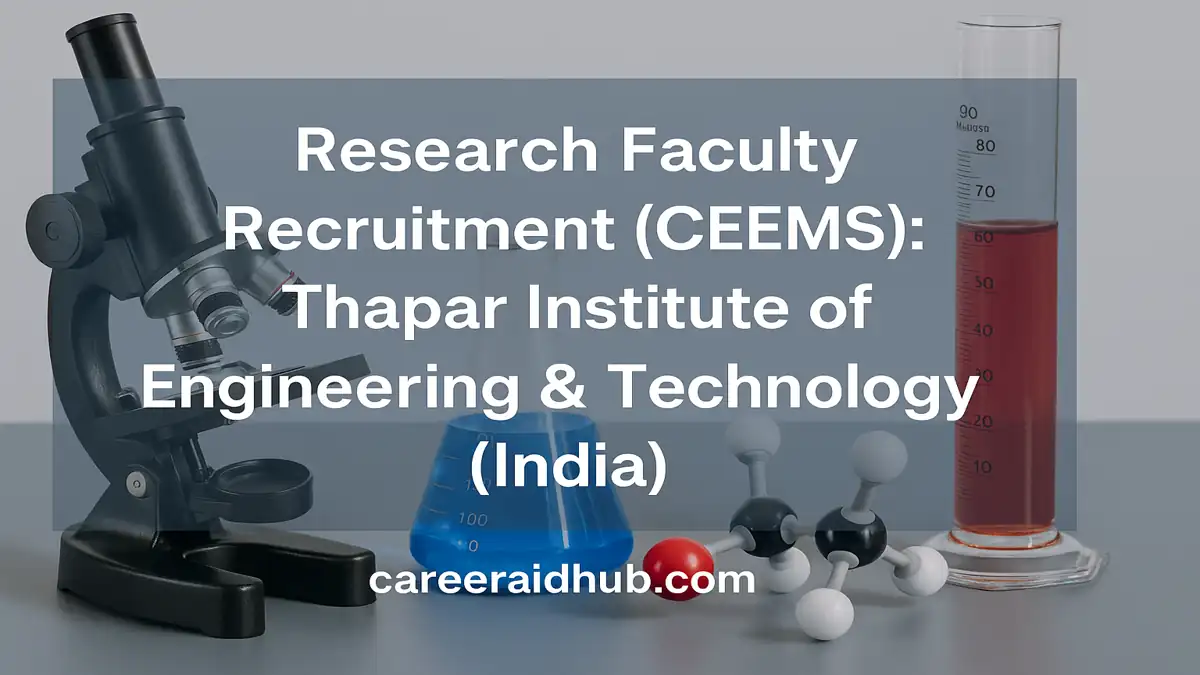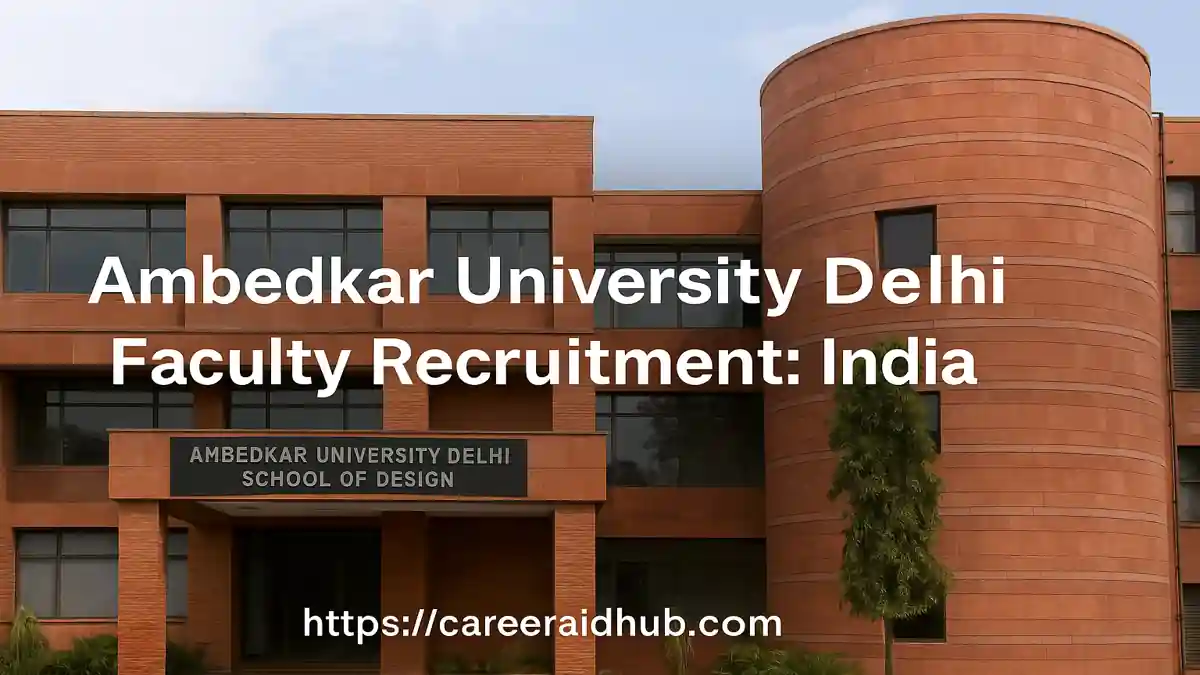How to Build a Career as a Faculty/Academician
In the evolving global landscape of 2025–2026, the role of faculty members and academicians is more significant than ever. The modern academic professional is not only a teacher but also a researcher, mentor, and contributor to societal development. With an increasing emphasis on research-driven education and interdisciplinary knowledge exchange, academia offers professionals a unique pathway to intellectual fulfillment, stable career progression, and international recognition. This comprehensive guide provides a structured roadmap for individuals—from undergraduates to industry professionals—interested in pursuing or transitioning into a career in academia.
For those passionate about shaping minds, generating impactful research, and engaging in lifelong learning, becoming a faculty member is an intellectually and professionally rewarding choice. As universities globally adapt to technological innovations and pedagogical reforms, opportunities for aspiring academicians continue to diversify and expand. [1]
What Does a Faculty Member/Academician Do?
Key Responsibilities
Faculty members are entrusted with a broad spectrum of academic, research, and administrative responsibilities, including:
-
- Designing and delivering undergraduate and postgraduate course curricula
- Supervising research work at various academic levels, including undergraduate, master’s, and doctoral theses
- Conducting both independent and collaborative research initiatives
- Publishing findings in peer-reviewed journals and participating in academic conferences
- Contributing to curriculum development, academic committees, and institutional policymaking
- Engaging in university service activities such as mentoring, outreach programs, and interdisciplinary collaborations
Typical Day-to-Day Tasks
A typical workday for an academic may involve:
-
- Preparing lectures, presentations, or lab sessions
- Conducting classes, seminars, or online courses
- Consulting students during designated office hours
- Reviewing academic literature and developing research manuscripts
- Writing and submitting grant proposals for research funding
- Attending departmental meetings and academic panels
- Participating in peer-review processes and collaborative research
Industries/Sectors Employing Faculty Professionals
-
- Public and private universities
- Community and liberal arts colleges
- National and international research institutes
- Policy think tanks and government agencies
- Non-governmental and developmental organizations
- EdTech companies and private online education providers
Skills Required to Become a Faculty/Academician
Technical Skills
-
- Mastery of subject-specific content and pedagogy
- Strong academic writing and scholarly communication
- Proficiency in research design and data analysis methodologies
- Competence in instructional design and curriculum planning
- Familiarity with citation and referencing standards (e.g., APA, MLA, Chicago)
Soft Skills
none;">
- Effective communication and public speaking
- Student engagement and classroom management
- Time management and multitasking abilities
- Analytical thinking and adaptability
- Collaborative skills for interdepartmental and institutional cooperation
Tools and Technologies
-
- Learning Management Systems (LMS) such as Moodle, Canvas, and Blackboard
- Academic reference managers including Zotero, EndNote, and Mendeley
- Data analysis tools such as R, SPSS, Python, or STATA
- Online teaching platforms including Zoom, Google Meet, and Microsoft Teams
- Academic integrity software such as Turnitin and Grammarly
Educational Qualifications
Minimum Academic Requirements
-
- A master’s degree is a foundational requirement for teaching roles in colleges and junior academic positions.
- A Ph.D. or equivalent doctoral degree is mandatory for faculty positions at research universities and for roles involving supervision of postgraduate research.
Ideal Degrees and Diplomas
-
- Doctor of Philosophy (Ph.D.) in a relevant discipline
- Postgraduate diploma or certification in higher education pedagogy
- Specialized certification in digital and online education from recognized platforms (e.g., Coursera, edX)
Recommended Academic
Backgrounds
-
- STEM: BSc → MSc → PhD in fields like engineering, mathematics, or life sciences
- Social Sciences: BA → MA → PhD in disciplines such as political science, sociology, or economics
- Humanities: BA → MA → PhD in literature, history, or philosophy
- Commerce/Business: BCom/BBA → MBA → PhD in marketing, finance, or strategy
Best Courses and Certifications (Global)
Top 5 Global Certification Programs
-
- Harvard University (HarvardX) – Teaching and Learning Strategies
- University of London (UCL Institute of Education) – PG Certificate in Learning and Teaching
- MITx (via edX) – Evidence-Based STEM Teaching
- Stanford University – Certificate in Online Teaching and Learning
- SWAYAM (India) – Faculty Development Programs certified by AICTE
Leading Global Universities
-
- University of Oxford (UK)
- Stanford University (USA)
- University of Melbourne (Australia)
- ETH Zurich (Switzerland)
- National University of Singapore (NUS)
- Jawaharlal Nehru University (India)
Course Features
-
- Duration: 4 weeks to 1 year
- Cost: Ranges from free to approximately $4,000
- Mode: Online (self-paced or instructor-led), hybrid, or in-person
Career Path and Growth Opportunities
Entry-Level Positions
-
- Assistant Professor: The entry-level position
at most higher education institutions. Responsibilities include teaching, research, and participation in departmental activities. Often involves a tenure-track or probationary phase.
- Lecturer: Common in the UK and Commonwealth nations, lecturers focus on delivering undergraduate and postgraduate instruction. Research may be optional based on the institution.
- Research Assistant: Ideal for early-career professionals or postgraduate students. Responsibilities include assisting with research design, literature review, data collection, and analysis.
- Visiting Fellow or Postdoctoral Fellow: Short-term academic appointments focused on advanced research. These roles provide international exposure, mentorship, and publication opportunities.
Academic Promotion and Career Ladder
-
- Associate Professor: Promotion to this rank is typically achieved after 5–6 years and is contingent upon research output, teaching evaluations, and service contributions.
- Full Professor: Attained after 10–15 years, this role is conferred on individuals with a distinguished research portfolio, sustained teaching excellence, and leadership in institutional development.
- Department Chair/Head of Department: Oversees academic and administrative functions of a department. Responsibilities include hiring, budget planning, and interdepartmental coordination.
- Dean or Academic Director: Heads an entire faculty or academic unit. Involved in strategic planning, program approval, and faculty performance evaluation.
- Vice-Chancellor or Provost: Senior-most academic leadership positions responsible for setting the institution’s strategic direction, governance, and global engagement.
Industry Demand
There is a rising demand for qualified faculty in the following areas:
-
- Artificial Intelligence and Machine Learning
- Environmental Sustainability
- Biomedical and Clinical Research
- Online and Distance Education
- Global Business and Finance
Salary Outlook (Annual Estimates)
-
- Entry-Level: USD 35,000 – 60,000
- Mid-Level: USD 65,000 – 100,000
- Senior-Level: USD 110,000 and above (region and institution dependent)
Immigration Opportunities
-
- Canada: Express Entry system favoring Ph.D. holders
- Germany: EU Blue Card scheme for skilled researchers
- Australia: University lecturers listed on Skilled Occupation List
Cost of Study and Return on Investment (ROI)
Estimated Cost by Country
-
- USA (PhD): USD 30,000–60,000 per year (typically funded)
- UK: GBP 15,000–30,000 (scholarships often available)
- Germany/Netherlands: Minimal or no tuition (government-funded)
- India: INR 50,000–3,00,000 per year in public institutions
ROI Analysis
-
- Academic professionals often recover their education investment within 3–5 years of full-time employment
- Significant long-term benefits include job stability, research grants, and sabbatical opportunities
Financial Advice
-
- Apply for international fellowships (e.g., Fulbright, DAAD, Marie Curie)
- Opt for research/teaching assistantships with tuition waivers
- Explore student-friendly loan options or government financial schemes
How to Gain Practical Experience
Internships and Apprenticeships
-
- Graduate Research Fellowships (e.g., NSF, ERC)
- Teaching Assistant roles during postgraduate study
- International internships such as DAAD-WISE, TULIP (India)
Volunteering and Open-Source Projects
-
- Contribute to Open Educational Resources (OER)
- Volunteer with MOOCs and online course platforms
- Support NGOs engaged in global education advocacy
Job Search Strategy
Resume and CV Tips
-
- Highlight teaching, research, and leadership achievements
- Quantify impact through metrics (H-index, citation count)
- Include hyperlinks to your academic portfolio or ORCID profile
Portfolio and Interview Preparation
-
- Develop a digital portfolio with sample syllabi, teaching videos, and research summaries
- Prepare for mock teaching demonstrations and panel interviews
- Be ready to discuss your research agenda, grant strategy, and student mentorship philosophy
Challenges and Success Strategies
Common Challenges
-
- Competitive tenure-track hiring processes
- High publication expectations for promotion
- Work-life balance difficulties, particularly during early career stages
Expert Recommendations
-
- Actively participate in professional academic associations
- Attend faculty development workshops and FDPs
- Regularly apply for research grants, travel fellowships, and academic conferences
Recommended Resources
-
- Books: The Academic Job Search Handbook by M. M. Heiberger
- Websites: Chronicle of Higher Education, Inside Higher Ed
- Podcasts: The PhD Life Raft, Academia et al.
Conclusion
Pursuing a career as a faculty member or academician offers a remarkable blend of professional autonomy, intellectual engagement, and social impact. While the path requires years of focused academic effort, the rewards are multifold—including opportunities for research leadership, mentorship, and institutional transformation. By systematically planning your education, gaining practical experience, and leveraging global opportunities, you can establish a successful and fulfilling academic career. [2]
Quick Summary Table
|
Feature
|
Details
|
|
Profession Name
|
Faculty Member / Academician
|
|
Duration
|
6–12 years (Bachelor to PhD)
|
|
Mode
|
Full-time / Online / Hybrid
|
|
Top Institutions
|
Oxford, Stanford, NUS, JNU
|
|
Tuition Fees
|
Free to $60,000/year
|
|
Financial Aid
|
Available (fellowships, stipends)
|
|
Career Prospects
|
Teaching, research, policy, administration
|
|
Application Deadline
|
Varies by program (Oct to Mar common)
|
|
Official Website
|
UGC India
|
Citations
- University Grants Commission (India)
- Euraxess – European Research Opportunities
FAQs
How do I become a university professor after completing my PhD? After earning your PhD, apply for assistant professor or postdoctoral roles, publish research, and gain teaching experience to build a competitive academic profile.
What qualifications are required to become a college lecturer? You typically need a master’s degree and teaching experience. For permanent roles, many institutions also require passing eligibility exams like NET or SET.
Is a PhD necessary for an academic career in universities? Yes, most universities require a PhD for full-time faculty positions, especially for research supervision and tenure-track roles.
How can I improve my chances of getting a faculty position? Publish in reputable journals, build a strong teaching portfolio, apply for fellowships, and network through academic conferences and online platforms like ResearchGate.
Which countries offer the best opportunities for international faculty jobs? Top destinations include the United States, Canada, Germany, Australia, and Singapore due to high demand, research funding, and immigration support.
What are the best platforms to find academic jobs worldwide? Use platforms like LinkedIn Jobs, HigherEdJobs, Euraxess, and Jobs.ac.uk to search for international faculty and postdoctoral positions.
How long does it take to build a career in academia? Typically, it takes 6–12 years, including undergraduate, postgraduate, and doctoral studies, followed by postdoctoral or assistant professor roles.
What is the average salary of a faculty member globally? Faculty salaries range from $35,000 to $110,000 annually, depending on the country, institution, rank, and years of experience.
Can I become a professor without publishing research papers? It’s highly unlikely. Most universities prioritize candidates with peer-reviewed publications and research experience for faculty appointments.
What are the top skills required for a successful academic career? Key skills include subject expertise, academic writing, research methods, public speaking, and proficiency with online teaching tools and LMS platforms.
Premium Mentorship for a Stronger Application
- Premium Mentorship: personalised 1:1 guidance for this and similar opportunities
- In-depth review of your CV, academic profile, and key statements
- Aligned with international selection criteria so your profile matches what panels expect
- Stronger, more compelling narrative for highly competitive calls
- Step-by-step support from opportunity mapping to final submission (fee-based)
Subscribe Premium Mentorship


